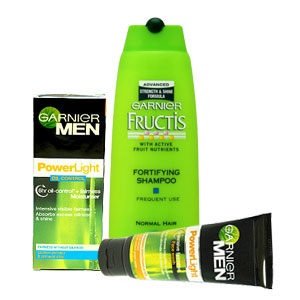
In recent times, health, diet & lifestyle have become significantly important for Indian customers. Consequentially, there is a rush amongst companies to prove that their product scores high on the health benefit plank. While Parle leaps in the health-snack category with the 'You will need it' campaign for Monaco smart chips, GSK Consumer Care extends its Holicks brand into healthy noodles called 'Foodles' & underscores that RTE(ready-to-eat)segment needs an overhaul when it comes to health benefits(however, this one can be a major branding goofup--Horlicks as a brand is synonymous to health, while 'healthy noodles' still remain an oxymoron to the Indian populace). Also in the current scenario the concept of 'Fortified Foods' & 'Enriched Foods' is picking up in a big way. So while Maggi touts its iron & calcium content, Aliva relies on its 'multi-grain' features for brand building. Companies like HUL are taking ardent measures to completely remove trans-fat from all their products & TATA has followed the suit by launching a revolutionary product in the form of 'TATA SALT Lite which contains 15% less sodium than ordinary salt.
According to a recent report by Nielsen company,59% Indians actually took the nutrition labeling into consideration before buying the final product. Nutritional information on 'Fats' was given maximum importance followed by 'Calories' & 'Preservatives’. This craze about healthy living is seconded by the rapid growth of ‘health & wellness’ industry in the country & the evolution of FMHG(fast moving health goods)as a dominant category in the market. The underlying factors for this rapid growth of FMHG can be:
1) Increased consumer awareness—People wish to compensate for their sedentary lifestyles by eating healthy. Also,owing to the escalating cost of medical treatment, people are resorting to ‘Prevention’ than ‘Cure’.
2) Organized Pharmaceutical Retail—With extensive CRM (customer relationship management) measures, organized pharmaceutical retail has made the concept of FMHG quite popular in the country. Retail stores like Guardian have even introduced various private label products to practice ‘bottom of pyramid’ marketing techniques & expand the FMHG market by lowering prices.
3) Changing Regulatory Framework: The plan of Drug Controller of India to sell schedule K drugs at grocery stores will augment the popularity of health- products besides of course expanding the target audience for the segment.
The definite challenge in such a market would be to differentiate the product from the clutter. In a market which is currently riding on generic health claims (health claims based on well-established, generally accepted knowledge from evidence in the scientific literature and/or to recommendations from national or international health bodies), the success of any company will depend on how well it is able to promulgate innovative health claims (health claim other than a generic health claim based on scientific evidence applied to existing or new foods. These claims must be substantiated according to a process set out in the Joint Health Claims Initiative Code) for its products. The limiting factors in this case being excessive R&D expenditure & dissimilar national health policy of countries. Also, in recent times there has been strict monitoring of health & nutritional claims made by companies. Besides, there has to be suitable spending on educating customers about reverence of nutritional benefits. A SEC B housewife would not bother to buy 'Sofit'-The Soya Milk unless she knows the precise post-menopausal benefits of Soya isoflavones. Similarly health foods will find few takers in ordinary retail stores until adequate POP incentives are propounded followed by suitable customer education.











